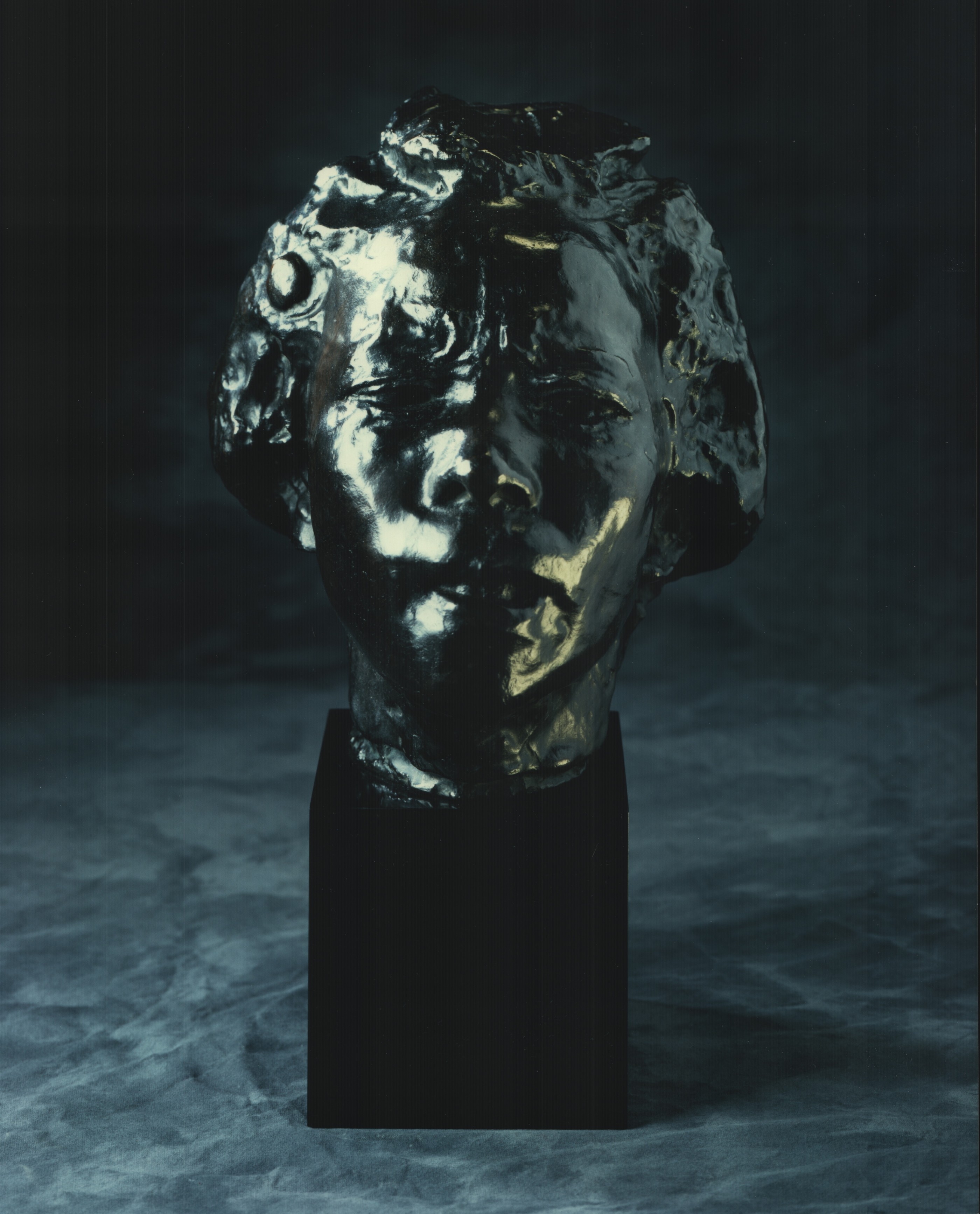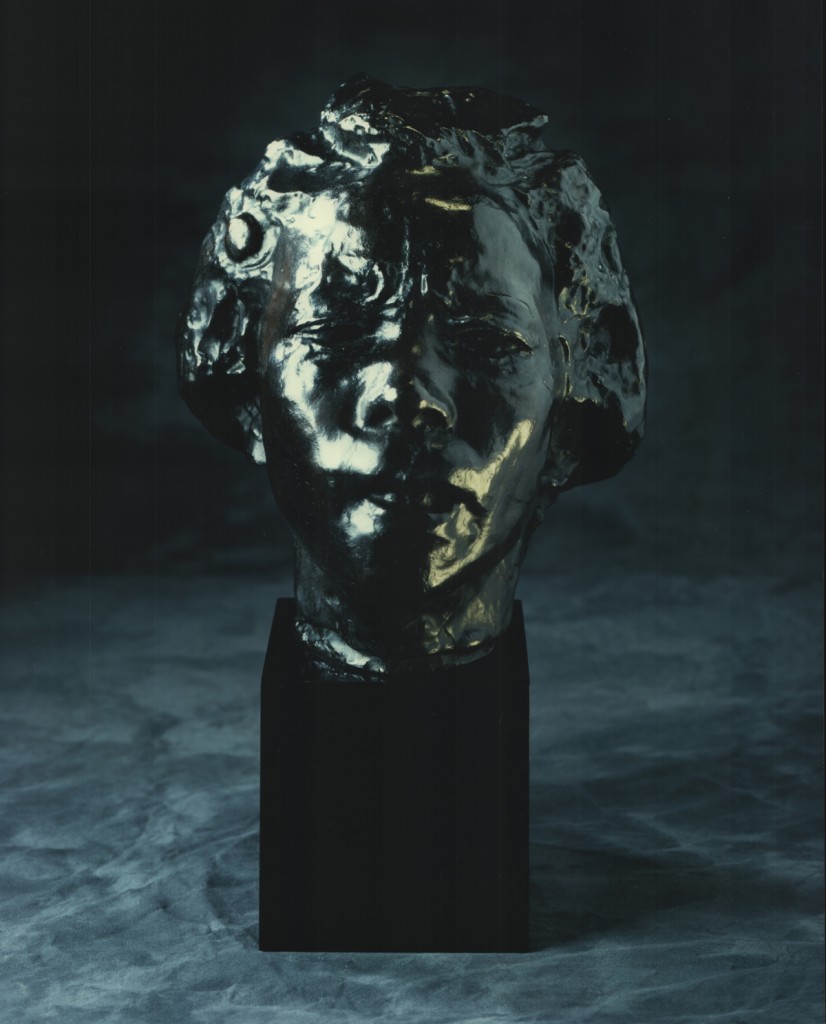
Spotlight on “Mask of Hanako, Type D”
Whereas his contemporary Degas was interested in dancers as subject-matter, Rodin was interested in dancers for what they taught him about how the body worked and moved. In 1906, in Marseilles to study the Royal Cambodian dancers, he met the Japanese dancer and actress Ohta Hisa (1868-1945), who had been nicknamed “Hanako” (“Little Flower”) by another dancer, the American Loïe Fuller.
Hanako was renowned for her astounding coordination and her ability to hold a difficult position. She posed for Rodin beginning in February 1907 and he made at least 53 heads plus several drawings of her. According to Professor Albert Elsen, Mask of Hanako, Type D was first titled by Rodin Mask of the Anguish of Death. It possibly was inspired by a death scene the sculptor saw her perform.
Rodin’s friend and biographer Judith Cladel described one of Hanako’s sittings:
“Hanako did not pose like other people. Her features were contracted in an expression of cold, terrible rage. She had the look of a tiger, an expression
thoroughly foreign to our occidental countenances. With the force of will the Japanese display in the face of death, Hanako was able to hold this look for hours.”
This provocative little piece, barely eight inches tall, was modeled by Rodin about 1908. During his last decade of life the artist rarely executed large pieces; they may have been too difficult for him physically. This was however the period when he modeled many dancers.
The Cantor Foundation cast is number 8 in an edition of 12, executed in 1979 under the supervision of the Musée Rodin.






No Comments